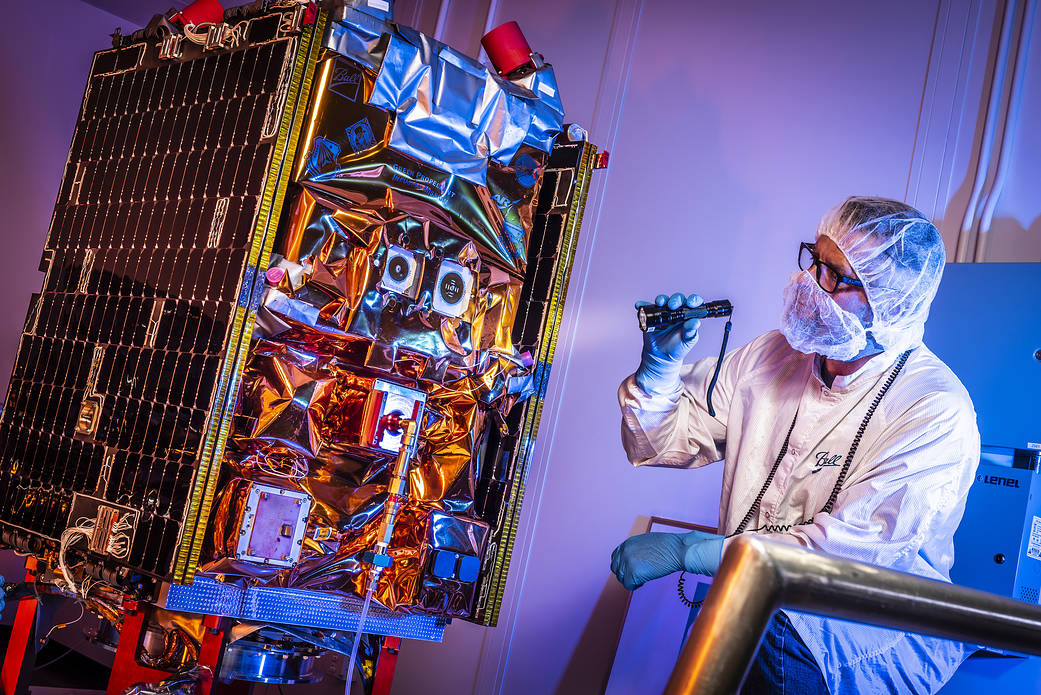一个迷你冰箱大小的小宇宙飞船里充满了尖端的“绿色”技术。美国宇航局的绿色推进剂注入任务(GPIM)将证明是一个可持续的和有效的太空飞行方法。此次任务将首次在太空中测试一种低毒性推进剂和兼容系统。这项技术可以通过提供更长的任务持续时间和更少的推进剂来提高未来任务的性能。
在这张照片中,一名球形航空航天工程师正在对飞船进行最后的检查,之后飞船将被送往位于佛罗里达州的NASA肯尼迪航天中心进行发射处理。GPIM是2019年6月SpaceX猎鹰重型运载火箭搭载美国空军空间和导弹系统中心空间测试项目2 (STP-2)执行的四项独特的NASA技术任务之一。
A small spacecraft the size of a mini-refrigerator is packed with cutting-edge “green” technology. NASA’s Green Propellant Infusion Mission, or GPIM, will prove a sustainable and efficient approach to spaceflight. The mission will test a low toxicity propellant and compatible systems in space for the first time. This technology could improve the performance of future missions by providing for longer mission durations using less propellant.
In this photo, a Ball Aerospace engineer performs final checks before the spacecraft shipped to NASA’s Kennedy Space Center in Florida for launch processing. GPIM is one of four unique NASA technology missions aboard the June 2019 SpaceX Falcon Heavy launch of the U.S. Air Force Space and Missile Systems Center’s Space Test Program-2 (STP-2).
Credits: Ball Aerospace







